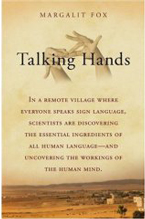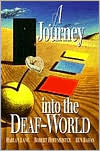Fingerspelling…
If you are hearing, you probably need improvement in this area. A few days ago I was reading this article (appropriately titled, “What’s the Matter with Interpreters?!”) by A Deaf Pundit, in her blog The Deaf Edge. Below is the paragraph which addresses fingerspelling:
Why is it that so many interpreters cannot understand fingerspelling? Now, I understand my fingerspelling isn’t the best in the world, but seriously… Do I have to give a second per letter? How slow do I have to go? I don’t have the time to be s l o w in class or in a limited time situation. I just don’t understand. Maybe I’m too hard on others when it comes to fingerspelling, because the majority of the time, I know what the word is halfway through due to context. And I don’t need the person to slooooowly fingerspell it out. What does it have to take to improve hearing people’s receptive skills?
These are terrific points for every interpreter to think about. It is our job as interpreters to serve the deaf client efficiently and competently; especially in the adcademic setting, there isn’t time for either participant to s l o w d o w n for the spelling of names and important vocabulary. Clarity does not require a snail’s pace.
So what can we do to improve?
The most obvious answer is PRACTICE! Read the comments to A Deaf Pundit’s post and, without feeling defensive, take a good, honest look at your fingerspelling skills. Are you a lazy speller? Do you put in the time to practice fingerspelling daily? I know I don’t. In fact, I’ve long been wondering what I can do to improve in this area. So today, I am pulling together a list of resources that can be found on the web.
Websites
Here are a couple of great websites for practicing receptive skills.
Dr. Bill Vicars’ ASL Fingerspelling Tool – This first website tool is fun because you can controll the speed and quiz yourself. Put in a little time every day and see what happens. Can you make out any words at “Deaf” speed?
John A. Logan College IPP: Fingerspelling – This website is great for many reasons. Here, words are signed by several different people (who I believe might be deaf) at normal speed. They are also grouped into common letter patterns, from easier ones, to those more difficult to perceive. If you can learn to recognize common patterns of letters, you will more easily be able to guess the word from its shape. And this is a great place to remind you, as the website’s author Paula M. Willig does, that you should not be looking directly at the hand, but instead at or around the signer’s face.
You can also also use this website to practice your production of fingerspelled words. Yes you need to practice that too. Daily. Learn to sign clearly, but quickly enough that your client isn’t w a i t i n g for the end of a word that they’ve already figured out – just as A Deaf Pundit says in the quote above. You need to get on to other important material in the lecture, before it’s too late!
These lists are great for practicing the transitions between groups of letters. Remeber when you learned how to write in cursive back in the third grade? The lists of words that you practiced were grouped in this same way so that you would become proficient at the transitions between various letter combinations. Dr. Bill Vicars also provides some lists of words to practice on his normal website, ASL University; however, he only provides one worksheet and it lists only 3 letter words. I imagine that he will be adding more in the future if he feels that there is a demand for them. These sites are great because, I don’t know about you, but I have often tried to create lists like this for myself. Now I can begin with these and add my own as I progress.
Videos
There are also several fingerspelling videos out there, although I haven’t had a chance to use them myself since I’ve graduated from the IEP and no longer have access to free videos (more on that in a future post). Dr. Vicars recommends this video for beginners: Fingerspelling, expressive & receptive fluency a video guide (1992) by Groode, J. L., Holcomb, T., & Dawn Sign Press. And for non-beginners, he recommends a book that you can use to make your own practice videos: Expressive and receptive fingerspelling for hearing adults (1988) by Guillory, LaVara M. Check out Dr. Vicars’ website for advice about how to do this. And, of course, you can use any lists of words to make your own videos.
What not to do.
I recommend reading all that Dr. Vicars has to say about fingerspelling on his website. He also has some great advice about how to practice, what fingerspelling should feel like, and what it should look like. Here he mentions something that I never realized:
I recommend that you don’t practice spelling license plates. Sometimes students like to spell license plates while driving or riding around in a car. I think this a counterproductive habit because it causes you to think letter by letter instead of whole words. It is much better to spell road signs like “exit” and “yield.” Again, you need to say in your mind the complete word, “yield,” not just “y” then “i” then “e.”
Oh no! I’ve certainly done that! So, if you must practice while riding in the car, practice road signs only, as those will be real words and place names.
One other video that was enlightening to me, is on the “Signing Stories Video” featured in Signing Naturally, Level 3. In story number four, “Some Thought on Fingerspelling,” Laurene Gallimore does an excellent job of explaining how children in signing households learn to read fingerspelling. She points out that children do not read or sign each individual letter. Instead, they notice the shape of the word and try to copy that.
The Phonebook
Finally, and you may have heard this before, practice spelling names and addresses from the phonebook. What are the things that you will most likely have to spell? Names and addresses. And it won’t hurt you a bit to practice phone numbers, either.
Remember, nobody ever said learning sign language was easy or that it was easy to become a sign language interpreter. Actually, people say this all the time. Perhaps if we can despell the myth that ASL is easy, there will be fewer incompetent interpreters in the field. That’s something to think about.


 This is how I spent my evening last night – with a glass of white wine and sign language. I’m reading this
This is how I spent my evening last night – with a glass of white wine and sign language. I’m reading this 





